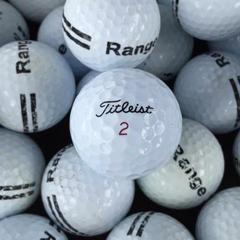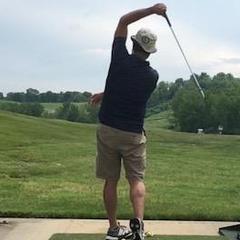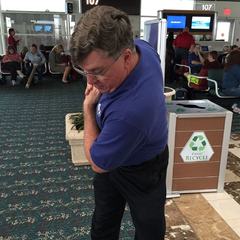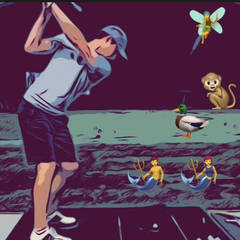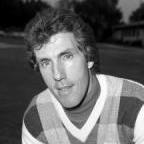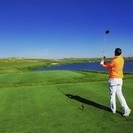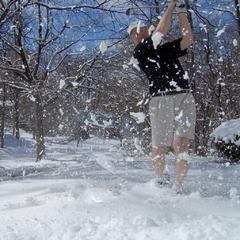-
Posts
17,483 -
Joined
-
Last visited
-
Days Won
157
mvmac last won the day on February 5 2022
mvmac had the most liked content!
About mvmac

- Birthday 03/19/1983
Personal Information
-
Your Location
Summerlin, NV
Your Golf Game
- Index: +1
- Plays: Righty
Recent Profile Visitors
29,468 profile views
mvmac's Achievements
-
Focusing on two things. Basically sticking with the same stuff @iacas recommended when I sent him some swings a couple months ago. - Not getting too squatty with the knees at 1 and tailbone not too far behind me. - Swiveling the right arm/elbow and allowing the club to toss more vertical at 3. The block behind my ball helps get the club up sooner.
-
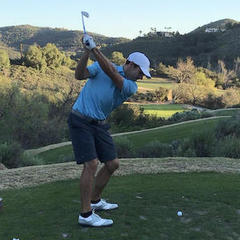
"Be the Star of Your Own Lesson" Article
mvmac replied to iacas's topic in Instruction and Playing Tips
What a horrible article. Who the hell has this guy taken lessons from?! He's probably one of those guys that thinks he can figure it out on his own. Other have made good points in response to the article, just want to point out that there were "star" instructors before magazine lists.- 19 replies
-
To be clear, this is NOT about the Rules of Golf. Read this passage: The design is as simple as can be. The fairway tilts from left to right and runs on a left-to-right diagonal from the tee. The green is oriented in the opposing direction—right to left—and a Muirfield-inspired doughnut bunker guards its front left edge. If you bail out to the forgiving left half of the fairway, you’ll have a dicey approach to a shallow target between the bunker in front and a fierce runoff behind. If you find the right side of the fairway while avoiding the hillside and grove of trees to the right, you’ll have more room for error. This is Strategy 101. Any halfway-decent architect could conceive of a hole like it. But what makes No. 2 at Laurelwood stand out is that the angles actually work. The fairway is the right width, and the green complex correctly sized and oriented, for the approach to be substantially tougher from the left than from the right. I should know. After a conservative tee shot to the left side of the fairway, I dumped a pitching wedge in the bunker. Having read that, please answer the poll, and then discuss below. Please answer the poll before reading any further. Thank you!
-
Continuing with the theme of "heaving" the hands and club up sooner on the takeaway. Basically going full "Dechambeau" or Nicklaus with the takeaway feels. Using the ProSendr ball mixed in with 9-3 swings everyday as a baseline to reinforce the feels. So build some width early, then keep it, especially with the right arm wide on the way down Some good rounds lately, last four have been 72, 69, 69 and 68.
-
Still working and feeling this.
-
Been a really solid 2-3 weeks of scoring after my index go all the way up to 1.4 (now +0.7). Focus has been on my grip, foot contacts at setup and putting enough energy into the move early. Here are my notes from a Facetime check in with Dr. Kay. - Still seeing head still go down and right P1-2. Need earlier right foot impulse. If I try and hold IR too long I don’t create enough space (too compressed) to flow and stretch into. - Easiest way to feel it is the ball behind my club drill and roll it back slightly inside the target line (roll it back with force) . Should feel right foot hold without trying to do it. Have to also keep left heel connection. Club should feel light until transition. - Club forward to P1.5 rehearsal (club working slightly in). Done correctly I feel right foot plant, left heel contact, right palm locked onto left thumb knuckle and a little palm down - Ball in left palm drill - P1: Medial foot contacts. Right palm on left thumb knuckle. After a week or so was still seeing my head/mass lower and move down and to the right (can lead to my pull draw misses). Keeping up with the same intentions, added in practice with a towel or wedge (mini ramp) behind my club to encourage the club and hands to "fling" up sooner. Helps me wind up very centered instead of falling down and to my right 1-1.5. While it "feels" more armsy or disconnected 1-2, it feels more stable with the release 6-7. What also helps is a mini trigger counter rotation move, left hip towards right heel.
-
Working on my grip, balance at setup and holding (not twisting) my right leg and foot longer into the backswing
-
Giving this thread a little bump. Great post and love this graphic. To help incorporate some of this into my own game I been very conscious and dedicated to NOT stopping at the top of my backswing the past month or so. I might rehearse to 2 or 2.5, then continue to the finish. My tendency is to shift right but get back left too late or not create that "fall" left as I still winding on the backswing.
- 26 replies
-
- 1
-

-
Ok, now I'm in full support of the new ball 😂
-
For the most part, yes. Seems like the new ball will be for junior to mid-am players (competitively) and for professionals. I would guess it will extend to state and local am events as well. Wonder if they will want used in qualifiers. Since it's so small, why do you think they're doing it? As a way to cap distances for the future? So they can say they did "something"? I think they have to figure out what hurts the product less, adopting the new ball (more appealing when guys are hitting it farther) or going against at least two of the majors.
-
Would like to get more clarification on what they mean by elite competitions. Is something like the U.S. Mid-Am elite competition? If I try and qualify for the Mid-Am, do I have to use the "reduced" ball during the round? Do I have to use it only in the event? Also, in order to enter qualifying I have to have a low enough index but it's based on me playing 99% of my rounds with the non-conforming ball. How about college players that play in Am, NCAA and pro events? Would make sense they'd have to play the reduced ball because the new feeder system to the tour. Just seems like it's going to create confusion in the marketplace and for manufacturers. Manufacturers won't just have to make tour balls but they also have to build drivers with designs that optimize launch and spin with the reduced ball. I can't see the PGA Tour being in favor of this, wonder if they will fight it or decide not to implement. Bifurcation isn't good for the game. There may also be consequences for the top players. A lot of them have built their games and swings around the modern ProV1 type of ball. Let's say the tour doesn't go with it, potentially the only event this matters would be the US Open (for the pros).
-
Should help with the pelvis stuff @iacas had you working on, especially if you can sense some pressure on the inside part of the foot. My pelvis can get "spinny" if I lose my first met connection.
-
Since my last post have had two good finishes in club tournaments. Few weeks ago had a one shot lead with two to play, pushed my approach shot on 17, got a bad break and made triple to finish second. Last weekend had an epic bad break where I hit an approach wedge shot almost into the hole (damaged the cup), bounces off the flagstick and goes into the water. Driver was good on the weekend. Continuing with some hand pressure/contact feels to improve backswing and transition. Big picture I've been working on landing left sooner around top of backswing/transition. What I feel disrupts that can be the path the right shoulder works on and how it tends to shrug on the backswing. With these swings I'm feeling the pressure on connection points change in the hands that connect to the right scap stability. Cool thing is I've never seen myself this "wide" with the wrist loading without it being forced. Hanging back and flipping a lot less with the driver! The drill I'm doing is a variation of the Rob Houlding four finger drill with some Dr. Kay info, modified by Robbie Failes. I'm basically feeling the same thing with my full swing. I was also shown some new ways to practice that are more in context for the golf course. Robbie put some of it on IG live but this was how it went: - Mechanics practice for a few sets - Then "forget it" and do some pitching distance control practice - Then recall the mechanics feel (how we learn) with a couple 5 ball sets with the only goal being whether I did the feel or not. If I fail, I start over until I can get five in a row. - Then a couple 5 ball sets doing the feel while hitting towards a target with a two finger (think AimPoint) distribution on each side of the target. Three fingers for driver. Goal for this one is to get 3 or 4 out of 5. - Then advance to doing it one shot with a driver, approach shot, pitch shot, then make the putt. All really good for me to get me out of my comfort zone of block mechanics practice and more golf practice. The last part in the video was after what I just described and Sean Kennedy put some alignments sticks 10-20 yards in front of me where I had to start the ball left, right and over the stick. Then two sticks (goal post) and start it left and curve it back, etc. This was at an instructor seminar where Dr. Kay was speaking, I was just there to guide some discussion, be a guinea pig and hang out. Beginning of the clip is how my hand path arc changed. Before swing would be a great way to hook it, narrow transition and hands stay high, slide and flip. After is wider in transition and hands at 6 match to their lowest point, basically creating more stimuli for me to pull up on the drip and push more from my lead side.
-

My Problems with George Gankas Instruction
mvmac replied to Phil McGleno's topic in Instruction and Playing Tips
Great question. One that many that follow him don't ask. What really gets me is that if I get the left arm in full adduction then I have to add a compensation like left wrist flexion so the face isn't open. It's a whirlwind of micro moves and compensations under the guise that passive arms are less complicated!- 40 replies
-
- 4
-

-
- gankas
- george gankas
-
(and 1 more)
Tagged with:
-
Felt some disconnection with my grip lately, tendency is to have my right hand come off the grip 1-1.5, leads to an armsy and wrist backswing. So spent some time making sure my right lifeline was staying glued to my left thumb on the takeaway. Forces me to use more of my pivot to carry the arms back and gives me more of that "one-piece" look going back rather than oversetting early. Backswing cue is either that or keeping the space between my right shoulder and ear the same from 1-4. That with some lower body separation in transition. Swing at the end if more slow work with the transition feel. Goal would be the take the bits that apply to me and do some trial and error. I think you have to be very skeptical of any advice. We all have our preferences and biases and golf instructors are no different. I learned from my S&T experience to not buy in wholly, I think that can limit your ability to learn and make mistakes. Here's what I look for in seeing if something is right for me: - Does it feel athletic? - Does it make sense? (Good example is with this recent passive arms stuff) - I should see some immediate change to contact or ball flight. Not saying I'm expecting to hit perfect shots but something different should occur. For example, with the swing at the end of the video, if I'm anywhere close to that move, I know there's no way the ball can go left.


